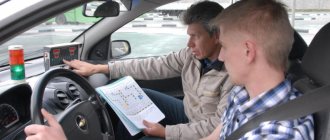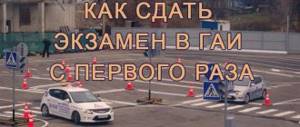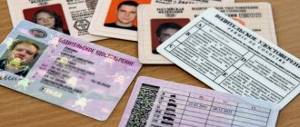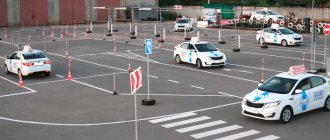Training driving instructors from scratch (Retraining course “Master of Industrial Driving Training”)
Retraining course:
- this is an opportunity to obtain a new and in-demand specialty
- cognitive training in the psychology of communication and communication methods from the best specialists in this field
- interesting job as a teacher
- employment opportunities in the best educational organizations in Moscow and the Moscow region
Purpose:
Additional professional education (retraining) of industrial training masters who train vehicle drivers.
Requirements for participants:
Persons who have at least a secondary specialized education, a driver’s license for the right to drive vehicles of the categories for which he will teach driving, and at least three years of driving experience are allowed to participate in training. No deprivation of driving privileges within the last 5 years.
Upcoming classes: from 03.25.2021
Duration and cost of the course:
Volume: (252 hours) 1.5 months, including theory and practice. Tuition fee: 22,000 rubles.
Form of study:
full-time, part-time, mixed (distance). For those wishing to find a job, interview: from 12:00 to 18:00 (except Wednesday, Saturday and Sunday).
The first lesson is free! Call +7 (499) 794–09–61 or leave a request on the website:
- Brief description of the program
Transport legislation
- Principles of safe vehicle driving
- Design, structure and operation of the vehicle
- Driving training methodology
- Psychology of learning
- Introduction to professional pedagogy and andragogy
Curriculum (view in .pdf format)
Diploma of completion of the course for the training of driving instructors (masters of industrial training in driving a vehicle)
Timetable of classes
Schedule of classes for group 24-18 under the professional retraining program “Master of Industrial Driving Training”, Training and Training Center LLC “Professional”
| Days of the week/date | Time | Academic subjects | FULL NAME. teacher |
| Monday, February 4 | 16:00– 19:00 | "Introduction to the specialty" | Zaitseva Elena Ilyinichna |
| Tuesday, February | 16:00– 19:00 | “Legislation in the field of road traffic. Elected heads of traffic rules" | Zaostrovtsev Alexey Vladimirovich |
| Thursday, February | 16:00 – 19:00 | “Legislation in the field of road traffic. Elected heads of traffic rules" | Zaostrovtsev Alexey Vladimirovich |
| Monday, February 11 | 16:00– 19:00 | “Legislation in the field of road traffic. Elected heads of traffic rules" | Zaostrovtsev Alexey Vladimirovich |
| Thursday, 1 4 February | 16:00 – 19:00 | "Principles of Safe Driving" | Dushin Denis Lvovich |
| Monday, February 18 | 16:00 – 19:00 | “Design, structure and safe operation of vehicles. Driving training methodology" | Dushin Denis Lvovich |
| Thursday, February 21 | 16:00 – 19:00 | "Theory and practice of safe driving." | Gromokovsky Gennady Borisovich |
| Monday, February 25 | 16:00 – 19:00 | “Neuropsychological aspects in teaching methods in driving schools” | Rozhkov Leonid Borisovich |
| Thursday, February 28 | 16:00 – 19:00 | “Methodological recommendations for conducting classes in a group (important communication skills with a group)” | Plotnikova Margarita Alekseevna |
| Monday, March 4 | 16:00 – 19:00 | “Introduction to professional pedagogy. Psychology of adult learning. Fundamentals of didactics" | Zaitseva Elena Ilyinichna |
| Thursday, March 7 | 12:00 | Theoretical comprehensive exam. | Zaitseva Elena Ilyinichna Zaostrovtsev Alexey Vladimirovich |
Your own business driving school: how to open accident-free driving courses
The main goal of accident-free driving courses is to teach a person to drive safely, and not recklessly. “The name of the course “extreme driving” is incorrect. There is no such driving,” explains Leonid Novitsky, founder and director of the Training and Methodological Center for Advanced Driving Excellence. — Extreme is something artificial: first you create a problem for yourself, and then you overcome it. But emergency preparation is a completely different matter. This is the ability to properly drive a car and prevent accidents. As far as a person can foresee the situation on the road, he drives a car safely.” The most annoying thing is that they don’t teach this in driving schools and this skill doesn’t come with experience either. Otherwise, only beginners would get into accidents. And the statistics look ominous: 7-8 thousand people die on the roads of Ukraine every year. For comparison, over the 10 years of the war in Afghanistan, 15 thousand died. The material damage from one road accident is hundreds of thousands, if you count the work of doctors, road services, and everyone involved. But there are still dead...
Many people think: my grandfather had three classes of education, and nothing happened - he went. And I will. “You won’t,” assures Mr. Novitsky. - With the current traffic flow, with the current speed limits and vehicle capabilities, it is not enough to know the rules of the road and have serviceable rolling stock. You also need to be able to drive safely. In Germany, for example, until you pass three levels of emergency training, you will not drive. In our country, in addition to the fact that they don’t teach how to drive, there is also corruption at all levels - from obtaining a medical certificate to passing the exam at the traffic police. So what kind of security can we talk about?”
For some reason, proposals to introduce at least basic accident-free driving techniques into the driving school curriculum always fail. “A driver’s license obtained in a regular driving school should be considered amateur,” says Vasily Zaichenko, head of the Road Safety Center of the State Traffic Inspectorate Department of the Ministry of Internal Affairs of Ukraine. — And drivers involved in passenger transportation - taxi drivers, minibus and bus drivers - should be required to periodically undergo additional professional training, which would include elements of emergency driving. Ideally, of course, these techniques should be included in the curriculum of any driving school.” The draft laws, it turns out, were developed a long time ago. But bureaucrats always put off their adoption, Mr. Zaichenko complains.
The Traffic Police Department of the Ministry of Internal Affairs of Ukraine considers emergency training schools to be amateur activities - they say there is no legislative basis. And, nevertheless, every year the influx of students increases by 30%, and in the capital - by 80-100%.
Brains on automatic
The essence of emergency preparedness is simple: through training, a person is instilled with an automatic reaction to the road situation that exists at the moment. During the critical seconds, he does not have time to think about what needs to be done, but muscle memory reacts instantly. “If you stupidly stare at the lights of the car in front, and at the same time you have a cigarette in one hand, and the other is sticking out in the hatch, what kind of safety can you talk about? - Leonid Novitsky complains. - But this is an ordinary picture. Now imagine - the ball pin in the front suspension bursts. The machine reacts instantly to a breakdown. While the driver puts his hands on the steering wheel, he will not have time to do anything - not even hold the car."
The traffic situation can become critical at any moment. Critical - can turn into an emergency if a person does not react in time, explains Andrey Pilipenko, head of the Alfa-Drive training center for emergency training at Alfa-Shield LLC. A critical situation differs from an ordinary one in that there is only one way out. And the driver must find him.
Now anyone can master the correct driving skills in city mode, undergo anti-emergency training, winter courses, a driver-bodyguard course, comprehensive psychophysiological testing, sports training and even counter-terrorism driving. Although initially the methodology of the legendary motorsport coach Ernest Tsygankov was intended only for training athletes, intelligence officers and law enforcement agencies.
One of the “tricks” of this technique is the speed of learning: in 20-30 hours of training, a person masters thousands of techniques in order to, without thinking, choose the only correct one that is suitable for a specific road situation. “People, after graduating from driving school, go to a dealership, buy a car and come to us. And after five days of classes they leave here themselves,” says Leonid Novitsky. - Although at first everyone is afraid - how is it possible to learn to drive safely in five days if we learned nothing during the 3-month course? But you can learn if you work. And they work here until they sweat. In five days of training they lose up to 8 kg of weight. And if they lose that much weight, it means the load is appropriate. I keep people at the racetrack with a heart rate of 140-160 beats per minute. If I load less, there will be no result: the muscles will not remember what I require of them. During the three hours they spend daily at the race track, they don’t even have time to smoke. They are constantly on the move."
The first thing they teach is to sit correctly and steer correctly. Oddly enough, the less experience a person has, the easier it is to train him - there are no stereotypes or incorrect skills yet developed. “An experienced driver claims that he knows everything about driving. And when you ask, “how many braking techniques do you know?”, he answers that five, maximum seven. At the race track we simulate 150,” says Mr. Novitsky.
Classes begin with simulator training - tactics and techniques for rotating the steering wheel so that, without seeing, a person controls the direction of the steering wheels. On taxiing, the test is as follows: turn the steered wheels all the way in one direction, use the steering wheel to turn them to the other and return them back. This is one cycle. And so 10 or 5 such cycles - depending on the initial physical training of the student.
Business from scratch
To start in the “training” business, motorsport masters don’t even need any special investments - if they conduct training on a client’s car and conduct instructions themselves, without the help of additional teachers. The hardest thing, of course, is to find a landfill - a piece of land the size of a football field, but paved. Some people find them for free, some rent them, others try to privatize suitable plots. Tatyana Kravtsova, co-owner and instructor of the Kramatorsk School of Driving and Emergency Training “Power of Speed,” says that she and her business partner use an abandoned airfield as a training ground. “This is an ideal place: there are paved areas, a dirt road, and grass,” the athlete explains this choice.
If you take the matter seriously, there will still be some expenses - up to $5 thousand plus at least one car. The zero basic course has almost no effect on the car, but in courses for advanced drivers you will have to fork out for the “horse”. Only one set of rubber is used for one client (20-30 intensive classes). Plus various depreciation costs and gasoline - daily maintenance, car mechanic services (from $500 per month), oil change. A cool teacher may not have a permanent office—satisfied clients share phone numbers of the best instructors on forums, drive parties, and driving schools. Moreover, it is not always advisable to keep a team of instructors on staff, because the income of extreme car enthusiasts depends on the number of trainees. There are few clients - you can handle it yourself, more people - it is worth attracting an instructor at an hourly rate (from 100 UAH/hour in the regions and from 250 UAH/hour in cities with a population of over a million). A full-time instructor costs about $1000 per month.
A variety of people apply to emergency training schools. These are “real guys” who bought a license, a car, a “clean slate driver”, and a driver with bitter experience of road accidents and many years of accident-free driving experience who wants to improve their skills. Car enthusiasts come who want to try their hand at rallying. A separate category is people who moved from the outback to the big city.
The age group of students is from 12 to 60 years. Interestingly, 60-70% of students are women. Some schools even began to introduce a special “ladies’” emergency training course. “Actually, a driver is an asexual road user. However, by nature we have a different psychophysiology,” explains Konstantin Skipor, General Director of Auto Academy of Driving Excellence LLC. — Women are less at risk. Men have more recklessness, a desire to “show off.” But it’s better to let off steam and get your share of adrenaline not on the road, but in a closed area - on the race track.”
It is impossible to divide drivers based on gender, says Tatyana Kravtsova. “A person who enters the road is a full-fledged participant in traffic. A woman is simply more careful by nature, she plays it safe all the time, and this is beneficial,” explains the athlete. “A man will not play it safe, which is why he gets into accidents more often.”
It happens that after one road accident a person is panicky afraid to get behind the wheel. An experienced instructor can not only “cure” this syndrome, but also instill a love of driving. It happens that after this a person goes into a rage and cannot stop until he completes all the levels, course after course. “Once a woman doctor, a mother of three children, came to us to study,” recalls Andrei Pilipenko. “For four years we could not kick her out of the site. Now he constantly participates in rallies and Ukrainian slalom championships.”
Counter-crash instructors are mostly former racers and professional drivers who have been trained by the special services. “An ordinary private owner cannot work in this business,” Ms. Kravtsova is convinced. “He may have found himself in extreme situations, but he doesn’t know how to get out of them.” Even if he drives super well and has enormous experience, he still doesn’t feel all the nuances. Only in racing can you find out what needs to be done if the car, for example, has become on two wheels. People buy fast cars, but they don’t know how to behave at 200 km per hour.”
When promoting an accident-free driving course, it is important to correctly place the emphasis. “70% of our clients are corporate,” says Konstantin Skipor. — And it’s not just drivers. There are people, for example, software managers, who have to drive six hours a day, although driving is not their main responsibility. But the quality of the rest of the work depends on how professionally they drive, how tired, nervous and tense they are.”
Leonid Novitsky turned to companies selling cars with a proposal to “sell safety.” What does it mean? “The car dealership buys a certificate for emergency preparedness from us and, together with the sold new car, hands it over to the client. There are three parties involved: a trading organization, a bank and an insurance company, which then bear the costs of payments. If the cost of emergency preparation is spread over three people, this $500 is spread over five years of credit, then these are just pennies that dissolve, they are generally unnoticeable. A person buys a car, immediately learns, and drives without problems.” It makes no sense to advertise among individuals - 90-100% of clients come on the recommendation of friends.
Up to 1,000 new cars are sold per day in Ukraine. Every year more and more specialized driving schools appear. Already, many instructors are leaving their native lands and going free to open their own courses in a year or two. But this does not upset market players: they say, we are all playing with the same goals. After all, the more professional teachers there are, the less trouble there is on the roads.
MARKET PASSPORT
- Market size: about $25 million
- Number of participants: 10-15
- Profitability: 15-20%
- Prices:
- Basic course 100-300 UAH. in an hour
- Winter course 120-300 UAH. in an hour
- Counter-terrorism 150-300 UAH. in an hour
- driving
- Sports training from 500 UAH. in an hour
Yulia Gaevaya
Source: The Power of Money
Advanced training for driving instructors (masters of industrial driving training)
In accordance with the Federal Law “On Education in the Russian Federation,” masters of industrial driving training undergo advanced training courses once every three years, receiving a Certificate of Advanced Training based on the results of certification.
Target:
Advanced training for industrial training masters who train vehicle drivers.
Volume:
(18 hours).
Form of study:
full-time, part-time, distance learning.
Category of students and requirements for their level of training:
This type of training is intended for industrial training masters who have a diploma and are required to improve their qualifications at least once every three years.
Cost of education:
RUB 5,500 (per listener)
What does it take to become a driving instructor?
To get a clear idea of how to become a driving instructor, you need to study the list of requirements for a future teacher, without which working as a driving instructor is simply impossible:
- You must have a driver's license (starting from category B);
- Car driving experience (at least 3 years of experience);
- Impeccable knowledge of traffic rules;
- Availability of a specially equipped car, as well as documents for it;
- Certificate of completion of instructor courses.
If you have all the points in your driving record except the last one, then you can teach driving only as a private instructor (to persons who have a category B license, but have no driving experience). This is a good income option for those who study only from time to time.










